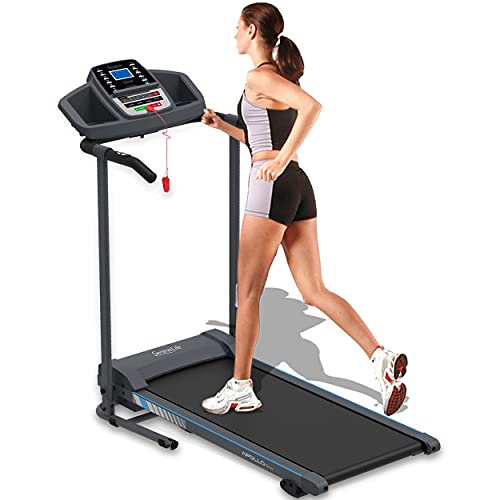Why What Is A Manual Treadmill Isn't A Topic That People Are Interested In.
What Is A Manual Treadmill?
In today's hectic world, including fitness into daily regimens has become necessary. Among link homepage of exercise equipment offered, the manual treadmill stands apart for its simplicity, effectiveness, and affordability. This blog post dives into what a manual treadmill is, its benefits, and how it compares to its motorized equivalent. We will also answer some frequently asked concerns to assist you make an educated choice about including a manual treadmill to your home fitness center.
What is a Manual Treadmill?
A manual treadmill, unlike a motorized version, is a self-powered machine that requires users to produce their own momentum. This suggests that the belt moves just when the user walks, jogs, or operates on the machine. Manual treadmills are normally light-weight and portable, making them a suitable choice for home workouts, specifically for those with restricted space.
Key Features of a Manual Treadmill
Function
Description
Power Source
Powered by the user's motion; no electricity required.
Weight and Size
Typically lighter and compact, permitting simple storage and mobility.
Expense
Generally more economical compared to motorized treadmills, making them available for budget-conscious customers.
Adjustability
Typically features adjustable incline settings to increase exercise intensity.
Resilience
Developed with less electronic parts, leading to lower threat of malfunctions and breakdowns.
Exercise Variety
Enables various workout modalities, consisting of walking, jogging, and sprinting, while providing resistance training through manual effort.
Benefits of a Manual Treadmill
Manual treadmills featured numerous unique benefits, attracting a wide variety of physical fitness enthusiasts. Here are some essential advantages:
1. Cost-Effectiveness
Manual treadmills are typically much more economical than their motorized counterparts. This price makes them an attractive choice for those aiming to buy physical fitness equipment without breaking the bank.
2. Space-Saving Design
Lots of manual treadmills are designed to be compact and lightweight, quickly fitting into little living spaces or home fitness centers. Their foldable styles also contribute to their space-saving abilities.
3. Improved Walking Form
Since the user manages the treadmill, they can naturally adjust their walking or running gait. This self-regulation can assist enhance general form, lower injury risks, and improve muscle engagement.
4. Strength Training
Using a manual treadmill requires more effort from the user, leading to increased calorie burn and better muscle strength over time. Greater resistance settings can also promote cardiovascular endurance.
5. Flexibility
Users can adjust workout intensity by increasing speed or incline, allowing for a variety of exercises from leisurely walks to high-intensity intervals. This flexibility keeps exercises fresh and appealing.
6. Eco-Friendly
Manual treadmills do not require electricity, making them an eco-friendly option. They promote sustainability, specifically for those looking to decrease their carbon footprint.
Manual vs. Motorized Treadmill
While both manual and motorized treadmills have their own sets of benefits, they cater to different needs. Below is a contrast table outlining their key distinctions:
Aspect
Manual Treadmill
Motorized Treadmill
Power Source
User-generated
Electric
Expense
Usually less expensive
More expensive
Area Requirements
Compact and often foldable
Larger, more stationary
User Control
Controls speed and momentum
Set speed, user adjusts incline
Constant Resistance
Differs based upon user effort
Continuous resistance
Upkeep
Generally lower upkeep
Requires more upkeep and potential repair work
In summary, a manual treadmill is a practical option for those looking for a reliable and economical exercise option. This self-powered equipment supplies numerous advantages, including expense savings, portability, and a flexible workout experience. Offered its growing appeal, many individuals are now choosing manual treadmills as part of their fitness routines.
FAQ About Manual Treadmills
1. Do I require to be a skilled runner to use a manual treadmill?
No, manual treadmills appropriate for all physical fitness levels. Novices might begin with walking and slowly progress to running as they develop confidence and strength.
2. Can I discover a manual treadmill with adjustable incline?
Yes, numerous manual treadmills come geared up with adjustable slopes, enabling users to increase exercise intensity as required.
3. Just how much space do I require for a manual treadmill?
The size requirements differ, but numerous manual treadmills are created to be compact and can typically be kept in small areas. Normally, a space of about 6 feet long and 2 feet wide need to be enough.
4. How can I securely use a manual treadmill?
To use a manual treadmill securely, guarantee that it is on a flat surface area, preserve correct posture while walking or running, and start at a slow speed to get comfy with the equipment before increasing speed.
5. What kind of maintenance does a manual treadmill require?
Manual treadmills require very little upkeep compared to motorized ones. Regular cleaning and looking for wear and tear will keep them in great condition.
6. Can I lose weight utilizing a manual treadmill?
Yes, utilizing a manual treadmill can aid with weight-loss, as it burns calories through physical activity. Combining constant sessions with a well balanced diet plan can help accomplish weight reduction goals.
In conclusion, whether one is looking to supplement their outside runs or looking for a practical indoor exercise solution, a manual treadmill uses an efficient method to stay fit. By understanding its features and advantages, people can make an informed choice that fits their fitness lifestyle.
